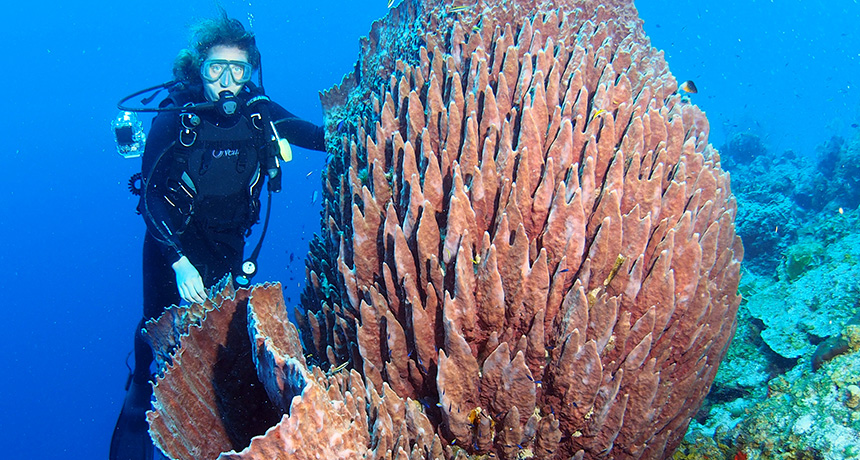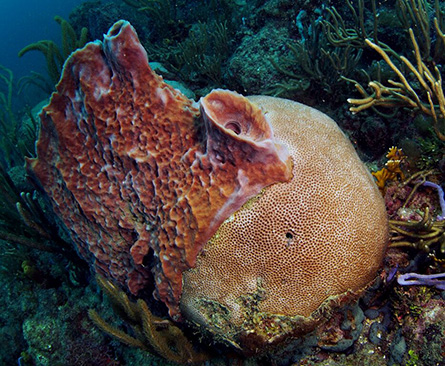Giant barrel sponges are hijacking Florida’s coral reefs
Change could spell bad news for animals that live there

TAKEOVER Between 2000 and 2012, the numbers of giant barrel sponges (one from the Bahamas shown) in the Florida Keys swelled.
J.R. Pawlik/UNCW





